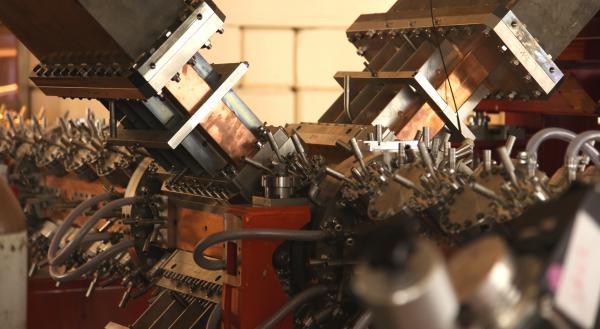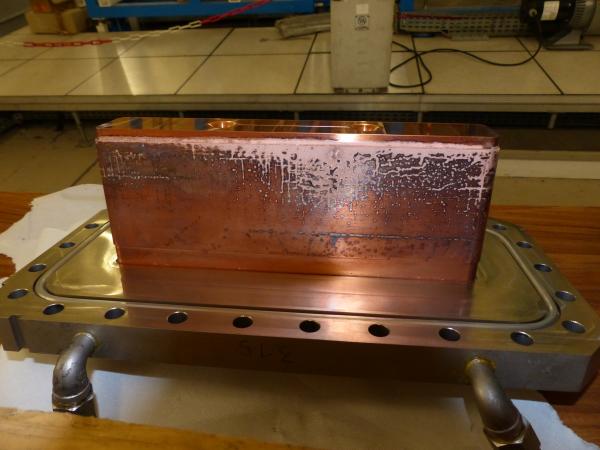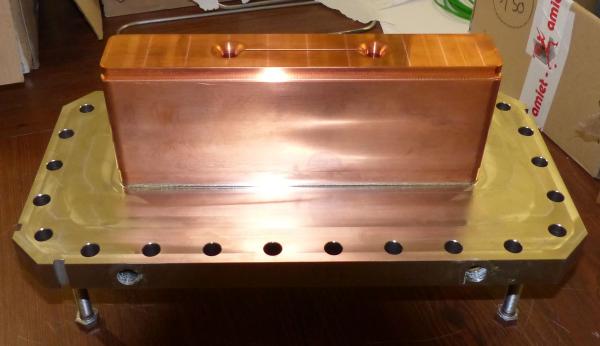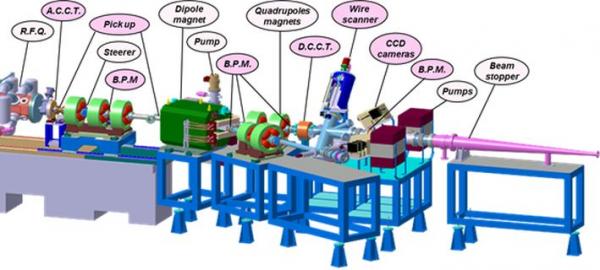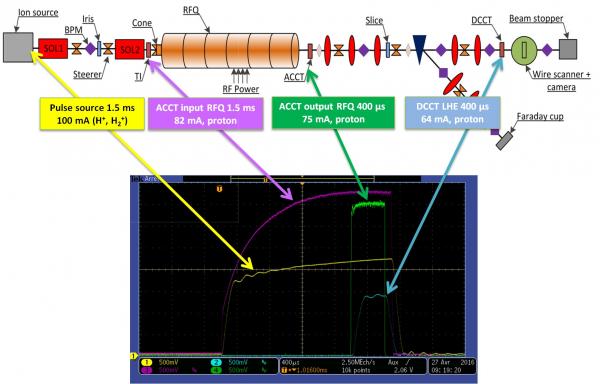The IPHI is a prototype proton injector that accelerates a 100-mA continuous beam up to 3 MeV. It is a collaborative project conducted by CEA-DSM, CNRS-IPN and CERN.
The injector consists of a proton source (a high-intensity, light-ion source called SILHI), a low-energy (95 keV) beam transport line, a radiofrequency quadrupole (RFQ) accelerating cavity that increases beam energy to 3 MeV, and a diagnostics line designed to measure beam characteristics at the exit of the RFQ.
RFQ CONDITIONING
The RFQ accelerating cavity is the heart of the injector. It consists of six sections, each about one meter long.The RF frequency of this cavity is 352 MHz. It is capable of bunching the continuous beam from the source with practically no loss, performing acceleration and focusing at the same time. Achieving this exceptional performance level requires overcoming considerable technological obstacles.
Once the six sections have been mounted on the support structure, the radiofrequency inputs (referred to as “ridges”) are connected. The assembly phase is then completed by fitting the pumping system and cooling system required for conditioning.
Conditioning consists of gradually injecting RF power into the cavity. While flashovers occur, power rises to a nominal value of 1.2 MW. RFQ conditioning began at the end of 2014. Roughly 120 hours of RF injection were carried out using a single klystron, without any major problems (up to approximately 120 kW peak, 0.3% duty cycle, f = 10 Hz). Following a shutdown to fit the final pumping system, conditioning was resumed in 2015, pursuing a more rapid build-up to a peak power of 800 kW, requiring, however, a change in the operating parameters. The consequence was a non-null, unbalanced reflected power, a loss in resonant frequency and a drop in voltage, i.e., a highly degraded RFQ. The decision was made to remove the ridges to analyze the situation.
RIDGE REMOVAL
The ridges were mechanically dismantled. Out of the four ridges, two showed damaged RF seals, altering the RF contact, thereby causing defective operation.
Analysis revealed RF penetration on the ridge side, weakening the ends of the RF seal, up to the point of melting.
A technical solution using a new seal in a pre-machined groove in the initial ridges made it possible to re-use them. Following repair, the RFQ was placed in a vacuum environment and RF conditioning was resumed successfully up to the voltage curve required to accelerate to the first beam.
THE DIAGNOSTICS LINE
The diagnostics line transports the 300-kW beam up to the beam dump. The beam is driven using focusing devices (quadrupoles) and deviation components (steerers). The diagnostics line serves to characterize beam intensity, energy, profile and emittance. Energy dispersion can be measured using a dipole to steer the beam. This measurement can only be taken, however, at a reduced, medium-range beam power of 10 kW maximum. The diagnostics line and measurements were designed by IPNO. The 300-kW beam dump was built by LPSC in Grenoble. In the last few years, the IPNO team completed installation of the diagnostics equipment and optimized the command and control system.
FIRST BEAM
The source and RFQ were set to pulsed mode from 1 to 1.6 ms for the source, and 200 to 400 µs for the RF of the quadrupole at the beginning of commissioning. The RFQ pulse length was optimized to accelerate the end of the beam exiting from the source. The first part of the source pulse was therefore quickly lost in the first few centimeters of the RFQ cavity. The pulse repetition frequency was set between 1 Hz and 5 Hz, depending on the type of diagnostics being performed.
This operating mode is assumed to be close to a continuous mode and should therefore result in parameter settings very similar to those used in continuous mode.
This facility, built through a collaborative effort by IRFU and IPNO teams, is remarkable for its reliability and operational repeatability. The first experimental results are beginning to confirm simulation data. Further research aims to generate a continuous, 100-mA beam.
• Accelerator physics and technology › High-Intensity sources and injectors



